Let's meet our LRVS 2022 Champions!
Here's a quick look at some of our Speakers and Panelists for LRVS 2022 along with the topics they discussed.


Ryan Chan
Ryan Chan
Asset Operations — The Future of Maintenance, Reliability, and Operations
Asset Operations — The Future of Maintenance, Reliability, and Operations
Today, the majority of asset-intensive organizations are stuck with complex, rigid, and traditional technological solutions that cannot step up to evolving challenges and an ever-changing market. But, it shouldn’t be like this. These organizations should have the tools they need to efficiently perform their best work, which in turn keeps our world running smoothly.
The tool these organizations need to move with the current pace of this world and towards the future is Asset Operations Management (AOM). And, we wrote an entire book about it! In this presentation, we will introduce our new book “Asset Operations”, and discuss this operating principle founded on the belief that asset-intensive organizations have much to gain by adopting new approaches to data, collaboration, and communication.
Vanda Franco
Vanda Franco
Are we listening to our machines? The QATAR edition
Are we listening to our machines? The QATAR edition
During the last decade different Oil Care programmes have been prepared and proper Oil Care related services and technologies have been applied in Qatar. These were based on each unit performance issues and respective lube oil condition, minimizing overall costs and wastage, having early detection of failure modes, increasing the oil quality and extending its life with a positive environmental impact.
Nowadays, most Major Oil & Gas Operators in Qatar, onshore and offshore, have their mind-set trained to listen to the machines and treat the lubricants as an asset not as a consumable.


Jim Hannon
Jim Hannon
Mobil™ Solvancer®: Improving turbine reliability and reducing cost of operation through advanced technologies
Mobil™ Solvancer®: Improving turbine reliability and reducing cost of operation through advanced technologies
Mobil Solvancer is a new oil-soluble cleaner product designed for gas and steam turbine applications, compressors and hydraulic systems that offers industry-leading performance to help turbine operators improve equipment reliability, reduce cost of operations, and reach extended overhaul-to-overhaul goals. Solvancer technology has helped power plants and refineries across the country avoid major shutdowns, including one instance where it saved a refinery from a 30–60 day outage that would have resulted in over $8 million in lost revenue.
Throughout this presentation, users will learn more about an oil-soluble cleaner that can help address critical business priorities, the Mobil Solvancer technology itself, and how the product is helping users simplify the change-out process, reduce maintenance hours, maximize productivity, and enhance overall performance.
Rob Kalwarowsky
How to Avoid Becoming an A$$hole Boss
For his presentation, he will be talking about turning the great resignation into the great retention. Let’s unlearn this toxic system and replace it with something better. Self-awareness, leadership of self, empathy and social awareness are all skills that you can practice every day. This steers you away from the destructive leadership patterns that all those bad bosses end up using. Instead you’ll create a work environment that is low on fear and high on trust. Your employees will want to stay.
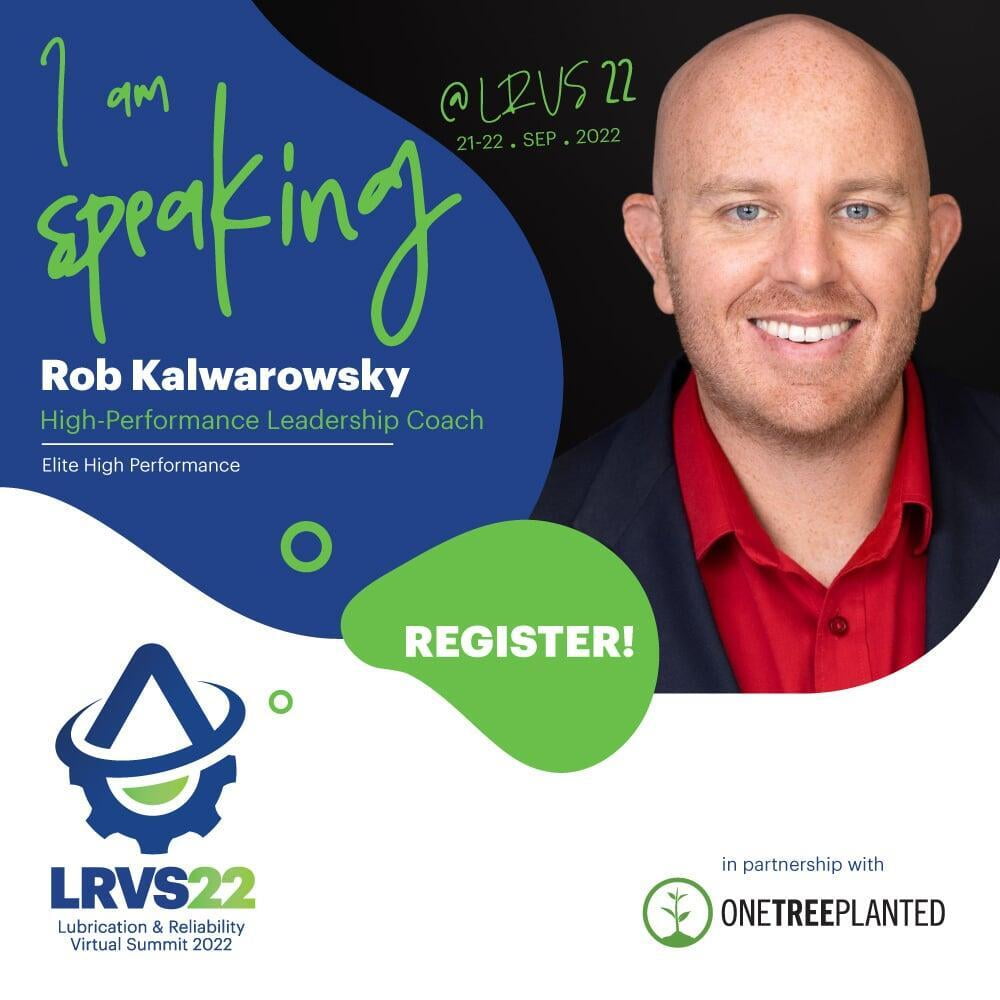

Paul Hiller, Mike Holloway, Rich Wurzbach & Wojciech Majka
Paul Hiller, Mike Holloway, Rich Wurzbach & Wojciech Majka
What Does a Machinery Lubrication Engineer (MLE)® Actually Do in the Real World?
What Does a Machinery Lubrication Engineer (MLE)® Actually Do in the Real World?
It is easy to wonder whether any single facility actually *needs* the comprehensive expertise that an MLE offers. In fact, it is easy to wonder whether any certified MLE ever gets to apply himself in all relevant areas where the MLE skill set can be brought to bear. It is also easy for the thousands and thousands of practitioners out in the field to wonder whether MLE “is right for me”--or maybe they automatically assume it is out of reach because of its top-tier reputation. Realistically, if more lubrication practitioners could have some idea of what MLE professionals actually do all day, they might consider pursuing the certification themselves, and then they would not miss out on what could prove to be a life-changing career choice.
Greg Livingstone
Greg Livingstone
The Drive towards Sustainable Lubrication
The Drive towards Sustainable Lubrication
Sustainability is an overused term, central in any “Greenwashing” strategy. The term has now made its way into the lubrication space with much written about Sustainable Lubrication, however without a lot of context or definition. This presentation will define what Sustainable Lubrication is and the three components that make up these practices. It will also compare the environmental impact of each of the practices, using data from Life Cycle Assessments. Is your organization benefiting from Sustainable Lubrication or is it falling victim to greenwashing marketing? You’ll know by the end of this presentation.


Erin Twamley, Jennifer Hill, Kathy Hannun, Gulaaz Afzal & Lana Norton
Erin Twamley, Jennifer Hill, Kathy Hannun, Gulaaz Afzal & Lana Norton
Energy Superheroes: Reliably Inspiring the Energy Future
Energy Superheroes: Reliably Inspiring the Energy Future
Panelists include:
- Jennifer Hill - Senior Operator, OGE Energy Corp.-Muskogee Power Plant
- Kathy Hannun - Co-founder & President, Dandelion
- Gulnaaz Afzal - Quality Engineer, Rivian Automotive
- Lana Norton - Executive Director and Founder, Women of Powerline Technicians
The perspectives of women in the industry are critical as we seek to broaden and diversify the energy workforce. This panel discussion features inspirational women working in energy that aim to help inspire the future energy workforce. To build our energy workforce of the future, we need to be talking to 10-year-olds about how we power our planet. This session is moderated by award-winning children’s book author and educator, Erin Twamley. Panelists are women featured in the new children's book, Everyday Superheroes: Women in Energy Careers.
Michael Parker
Michael Parker
Are Your Lubricants Reliable?
Are Your Lubricants Reliable?
This session will cover the why and how to's for best practices. The following will be presented:
- Importance of offline filtration
- Importance of proper lubricant handling
- Importance of oil analysis
- Importance of ISO cleanliness

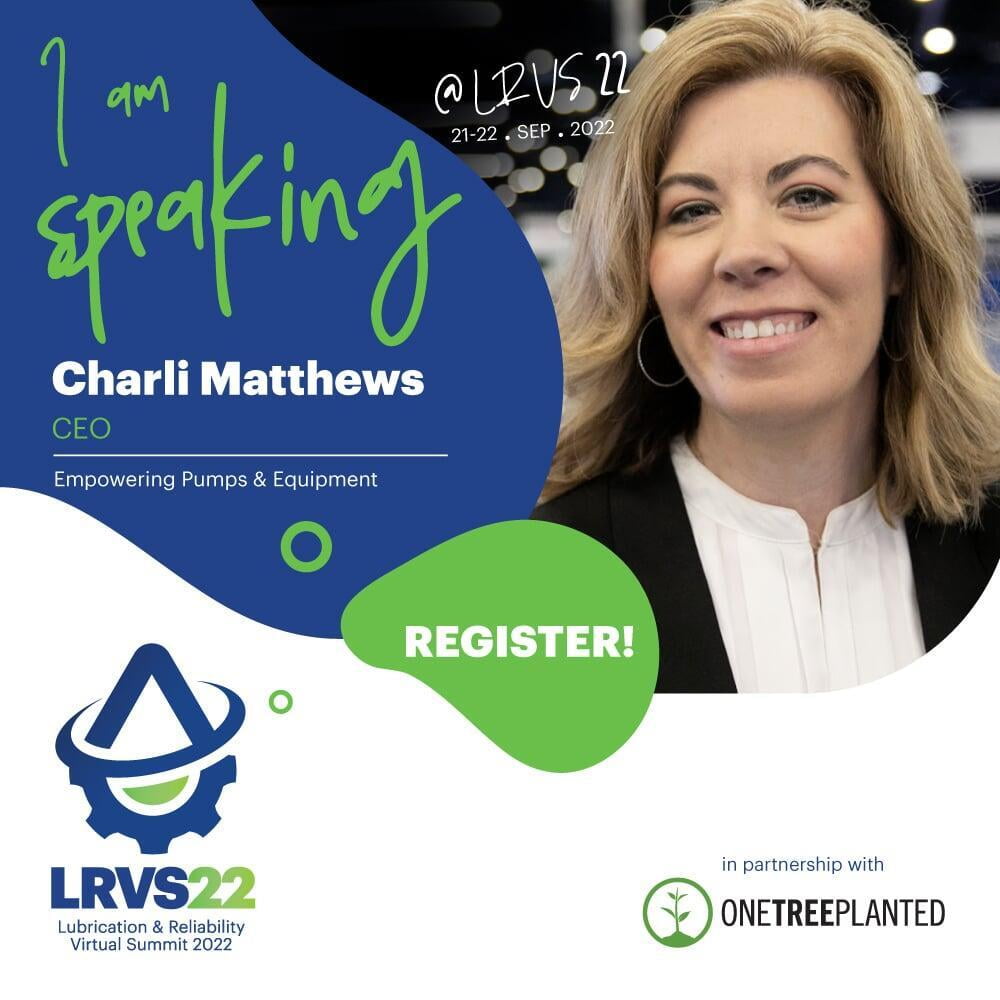
Charli Matthews
Charli Matthews
Empowering Women in the Industry
Empowering Women in the Industry
Have you ever wondered what it is like for women in male-dominated industry? Are you one of them? Let's talk about the impact women have on our industry and the success of organizations who had women leading during the pandemic. What needs to be done now that work is once again shifting...
Jonathan Venditti
Jonathan Venditti
Optimal Efficiency and maximum Reliability through Specialty Lubricants
Optimal Efficiency and maximum Reliability through Specialty Lubricants
A lot of applications where mineral oils are used offer a high potential of optimization and energy savings. With Kluber Energy, we have proven with over 350 cases that synthetic/specialty lubricants are cheaper alternatives to mineral oils. We helped our customers achieve between 2 to 9% energy savings on numerous applications like compressors, gearboxes, hydraulic units and pumps. In most cases the ROI is as low as 2-3 months in energy savings alone.
The higher cost of synthetic/specialty lubricants is always offset by the longer service intervals – in average 4-6 times longer compared to mineral based oils. What about the higher equipment availability and high production output, or lower need for maintenance? This means less manipulation which represents less risk of injuries! When the oil lasts 4 to 6 times longer this also reduces the waste generation. All these factors should be considered when making a choice between mineral or synthetic lubricants. What will be the right choice for your operations?
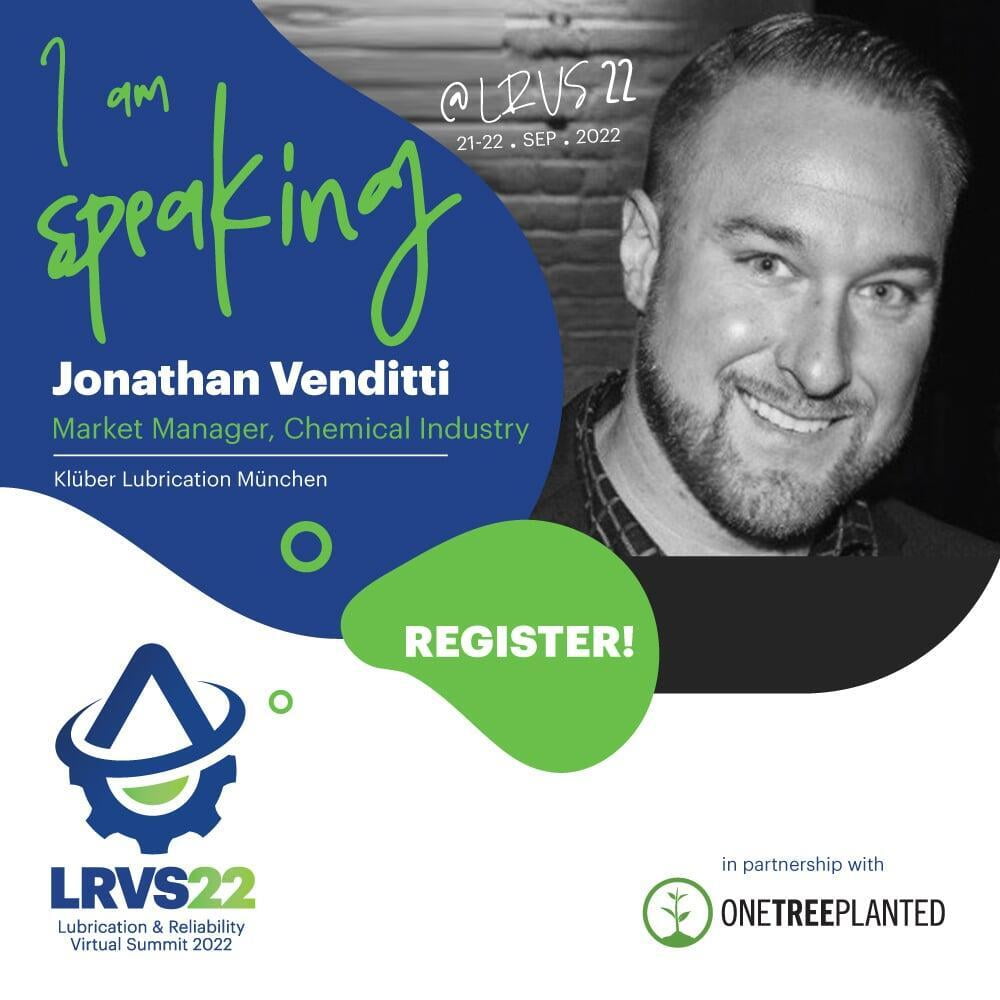

Michelle Henley
Michelle Henley
Break the Reactive Cycle with Defect Elimination
Break the Reactive Cycle with Defect Elimination
The reactive maintenance cycle is all too familiar - equipment fails, operations calls maintenance, maintenance repairs it and turns it back over to operations – "rinse, repeat". Fighting this battle becomes all consuming. It seems like the harder we work, the more there is to do. That is not a false perception. From a systems perspective, it is painfully true that defects beget defects; the more you have, the more you get. But this truth is also the key to getting out of the reactive churn. By attacking defects at their source rather than battling the symptoms, we can turn the vicious cycle of defects into a virtuous one. Join me for a conversation about improving performance using Defect Elimination to break the reactive cycle.
Doug Sackett
Doug Sackett
Tribology & Sustainability: How You Can Integrate into Your Plant Reliability Program
Tribology & Sustainability: How You Can Integrate into Your Plant Reliability Program
Lubrication and Reliability have taken on a whole new meaning with new corporate responsibility to achieve “net zero” or “carbon neutrality” by 2035-50 and how as Tribologist or Reliability Engineers do we look at all the avenues that we can utilize to achieve and document this goal. The UN explains the difference between sustainable development and sustainability as follows: “Sustainability is often thought of as a long-term goal while sustainable development refers to the many processes and pathways to achieve it”.
We will look at new and old lubrication formulation, technology and how to implement Tribology knowledge into your plant reliability strategy to lower your GHG or carbon footprint.


James Reyes-Picknell
How to know if your Reliability and Maintenance program needs help
Reliability comes from having a good maintenance program. How can you quickly determine if your program is capable of delivering high performance from your physical assets? Professional assessments will tell you, along with what to do about the situation, but they can be an expensive first step. This session will outline a few key areas to investigate on your own, to determine if that initial assessment investment is worth while.
Bryan Bieschke, CMRP
Bryan Bieschke, CMRP
Maintaining Humans
Maintaining Humans
Bryan will help listeners align their maintenance culture by understanding the human. We can create sustained precision, buy in, and value when connecting people. He will be talking about (5) core topics:
1. Status preservation
2. Priority correlation between human and maintenance
3. What's first when aligning culture
4. Maintenance perception
5. Literally working through problems


Mike Johnson & Rich Wurzbach
Using Advanced Oil Analysis Techniques to Thoroughly Validate the Continued Usability of Circulating Fluids
A paper mill in Eastern U.S. was looking at replacing 25,000 gallons of oil following the mill retrofit from print paper to brown packaging paper. Working with mill management a test protocol was created to demonstrate remaining life in the oil, net contaminants load and risk of the oil creating deposits and varnish in advance of dumping the oil and ordering replacement.
With this test protocol and thoughtful reflection on the data, the mill saved 15,000 gallons of oil for re-use, and determined that 1,500 gallons of turbine oil could be tasked for system flushes where needed. In this case study session, you will learn the advanced oil analysis techniques and protocols used to save this mill about $120,000 in fluid replacement costs.
Prof Max Marian
Machine Learning in Tribology
Tribology has been and continues to be one of the most relevant fields, being present in almost all aspects of our lives. Based upon this sound and data-rich foundation, advanced data handling, analysis and learning methods can be developed and employed to expand existing knowledge. Therefore, modern machine learning (ML) or artificial intelligence (AI) methods provide opportunities to explore the complex processes in tribological systems and to classify or quantify their behavior in an efficient or even real-time way. Thus, their potential also goes beyond purely academic aspects into actual industrial applications. This presentation aims to present the latest research on ML or AI approaches for solving tribology-related issues. The focus will be less on presenting new ML or AI methods but rather on demonstrating the possible applications of existing methods and their adaptation to problems in tribology.


Dr Carsten Giebeler
Advancements in Inline Oil Condition Monitoring
The session will describe the advancements in the application of the inline Oil Condition Monitoring Analyser including measuring highly accurate oil condition degradation of Group IV and V oils plus a host of disruptive measurements in various lubrication sectors.
Kathy Nelson
Kathy Nelson
Normalizing Women in STEM
Normalizing Women in STEM
One day I hope to not be considered a "female engineer" or a "woman in STEM". 30 years ago, my father-in-law came home from a Dr. appointment and told me he had gone to a "woman doctor" and that was a bit unusual at the time. Fast forward 30 years and there are more women graduating from medical school than men and a female physician is not usually called out as a point of interest. That's what I hope we can achieve in all STEM fields.
Normalizing women in STEM comes from seeing women in STEM fields in media - movies, books, etc. and not just in books about Women in STEM or for girls we are trying to encourage to go into STEM, but in our everyday media. Novels and movies where the characters happen to be women in STEM fields.
This presentation will focus on these media gaps and how we can collectively work to overcome them.

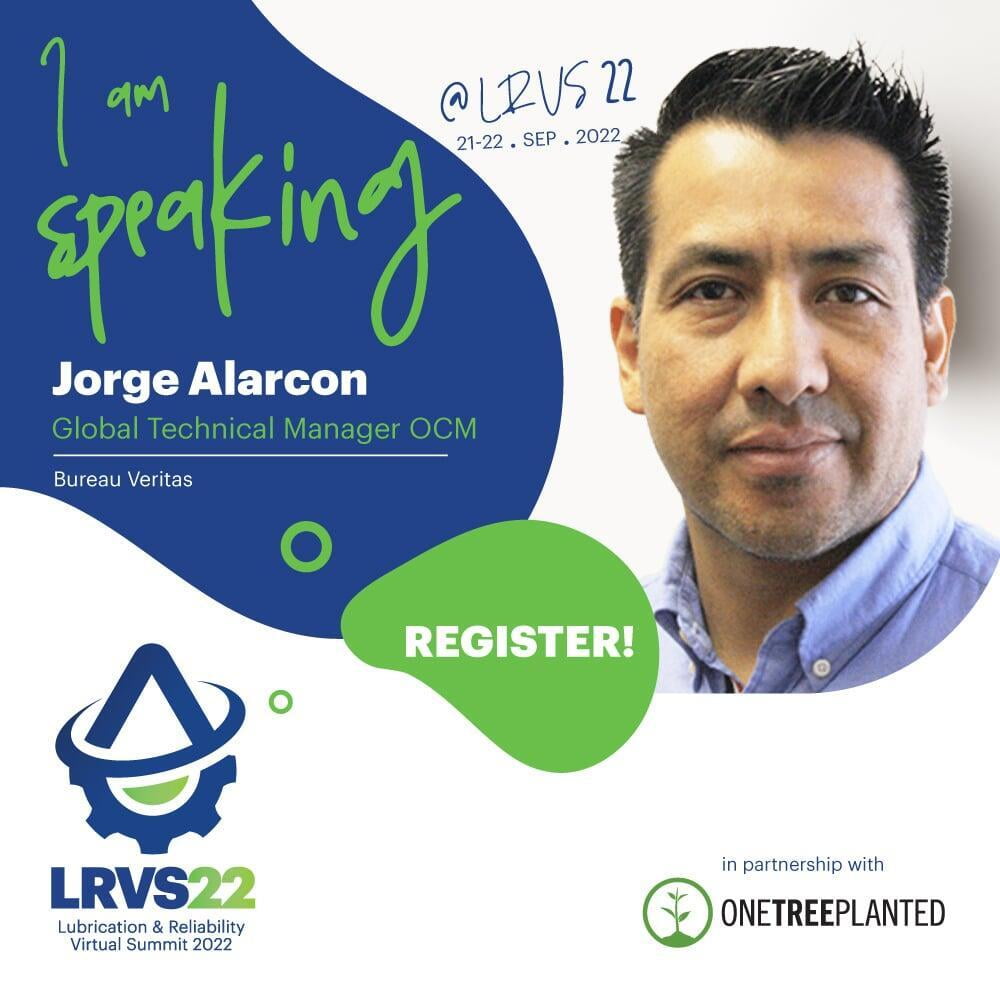
Jorge Alarcon
Lessons from 5 years feeding a neural system with oil analysis data
Oil analysis, as yet another predictive maintenance tool, has also been affected and conditioned by this wave. but how far do the results go? What are the benefits that end users receive now and unlike a few years ago? This presentation details the pros, cons, advantages and disadvantages of feeding a neural network system with data from oil analysis. What benefits will the technological boom ultimately bring? Is it just an improvement of the production process of a laboratory? Or will the end user really benefit from the results of such a technological advance?
The effect of geopolitics on the role of oil analysis in gas turbine power generation
Not many months ago we glimpsed a green scenario in all senses, where renewable energies would completely dominate the field of energy generation. However, all the objectives of the 21 summits on change have been blown away after the events we have experienced since 2019. Once again we are faced with a scenario where the generation will depend on fossil fuels for a long time. In this sector, gas turbines are, without a doubt, the most efficient machines we have for generation. However, problems related to functional failure of turbine lubricants have changed little. Early identification of these can improve the availability of these machines. With what new tools is oil analysis supported for this purpose? Can we take a step forward to improve the availability of these assets?
Elaine Hepley
Elaine Hepley
New Techniques in Varnish Analysis
New Techniques in Varnish Analysis
Varnish puts your equipment in a sticky situation - literally. Whether forming as sludge or plated film, the varnish will lower performance, increase operating temperatures, induce filter plugging and contribute to severe and catastrophic damage leaving you with unplanned downtime, maintenance problems, or equipment failure. Varnish can occur in vital assets such as turbines, compressors, hydraulics, and large-circulation systems. Monitoring the system’s lubricant health and taking appropriate actions promptly is key to maintaining component longevity and uptime.
Discover how combining traditional varnish analysis tests with cutting-edge techniques will uncover clues about the formation and phase of varnish, how to prevent critical levels from forming, and what mitigation method to use for varnish removal.


Andy Gager
ISO31000:2018 Standard and how it relates to ISO5000-Asset Management
This session will address ISO 31000-Risk Management as it pertains to ISO 55000 Asset Management. The ISO31000:2018 standard guides organizations in the process used to identify, strategize, and manage risk for achieving the organizations objectives.
Organizations in all types of industries and sizes face external and internal factors and influences that make it uncertain whether they will achieve their objectives. Managing risk is imperative and knowing the risks assists organizations in setting strategy, achieving objectives, and making informed decisions. Managing risk is part of governance and leadership and is fundamental to how the organization is managed at all levels. It contributes to the improvement of management systems. Managing risk is just one part of all the activities associated with an organization and includes consistent interaction with stakeholders.
Joel Levitt
Joel Levitt
Fundamentals of Lubrication Science for Maintenance doers
Fundamentals of Lubrication Science for Maintenance doers
Joel will be covering the Basics in a fun way!
This short talk will show the science of lubrication in an entertaining way.
It will use stories, graphics, and humor to explain complicated topics through an experienced storyteller such as Joel.


Dries Van Loon
Reliability vs Net Zero, Linking Fault Modes to Carbon Footprint
With advanced wireless hardware and AI powered software, finding early signs of machine health deterioration in rotating equipment, and identifying the root cause are becoming mostly automated.
With ESG (Environmental, Social, and Governance) and Net Zero targets becoming one of the most important topics in every boardroom, the question is how can these existing technologies help to quantify bad actors in your machine park? Add a value (lost energy cost) and priority (Highest environmental impact) to the decision-making process of where and what maintenance action to take.
These key parameters will make every dollar spent on maintenance justifiable with a measurable impact not only on the bottom line but more importantly how they have contributed to the Net Zero Targets every organization is committed to.
Join this presentation to learn more about this new horizon of Condition Monitoring and help make this planet more sustainable one wireless sensor at a time!
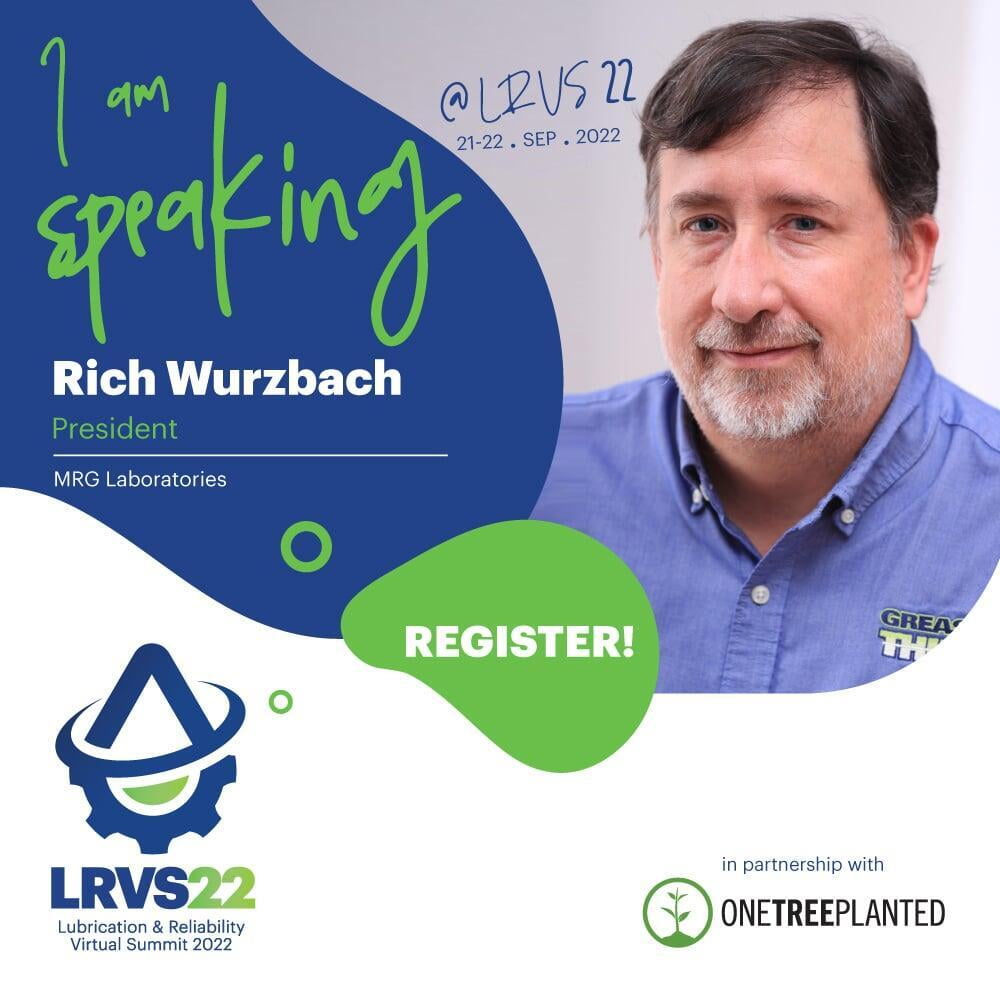
Rich Wurzbach
Rich Wurzbach
Establishing On-site Grease Analysis capabilities with mini-lab screening tools
Establishing On-site Grease Analysis capabilities with mini-lab screening tools
The ability to monitor the condition of grease and grease lubricated equipment is an expanding requirement for many asset owners. More commercial laboratories are expanding their service offerings to include Grease analysis. While this can be an important option, it is also helpful to have capabilities to more promptly assess these conditions, or to screen samples to determine which should be sent on for laboratory analysis. New developments have produced small, portable devices that can be integrated into a mini lab for grease analysis with modest space and power requirements. This presentation will outline the available technologies and how they can be used to create an on site mini lab to support Grease analysis of critical lubricated assets.
Jon Aramburu
Benefits of online solutions in lubricant lifecycle monitoring: focus on asset condition management
Nowadays, online lubricant monitoring solutions allow a higher level of real-time control of the different stages of contaminant control in lubricated systems. From fresh lubricant traceability to in-service lubricant condition digitalization, different opportunities are available to enhance lubricant and asset condition information.
With the use of some examples from different industrial sectors, we intend to reveal the benefits that online technology offers for asset condition and lubricant lifecycle monitoring.


Umut Arslan
Understanding of Oil Analysis Reports
Why do we do mineral oil analysis? Why are we allocating a budget for this? What actions should we take after receiving the analysis results?
In this presentation on ''Understanding of Oil Analysis Reports'', we will try to find answers to these questions and evaluate the oil analyzes together with the case studies.
Claudia Gomez-Villeneuve
Claudia Gomez-Villeneuve
The 30 by 30 Initiative: Lessons from 5 Years of the Women in Engineering Summit
The 30 by 30 Initiative: Lessons from 5 Years of the Women in Engineering Summit
In this session, attendees will learn key EDI lessons learned from hosting the Women in Engineering Summit (WES) since 2018 to over 600 attendees - first in Edmonton, then in Calgary, and now online due to the Covid-19 Lockdowns. These are the 3 key lessons learned, to meet the 30 by 30 Imitative by Engineers Canada:
- Offering flexible work opportunities, not just to women in engineering, but to all other genders.
- Enforcing work policies to protect women in engineering from discrimination and harassment.
- Supporting women employees with engineering degrees, to pursue their P.Eng. designation.


Bill Keeter
Condition Monitoring: It's Not About the Tools
Your organization invested lots of money in world-class vibration monitoring tools, the best ultrasound equipment, top-notch thermal imaging devices, and motion amplification technology. In addition, the condition monitoring personnel have received training from some of the most well-known and respected training organizations. Yet, the results of the condition monitoring program are mediocre at best. Having a successful condition monitoring program is about lots more than the tools used and the training of the technicians. In this presentation, you will learn about the main factors that can act as roadblocks to successfully implementing a condition monitoring program and what you can do to overcome those roadblocks.
Dr Michael Howard
Dr Michael Howard
The future of vibration analysis – Understanding MEMS technology
The future of vibration analysis – Understanding MEMS technology
It is essential that users, system integrators and other stakeholders clearly understand the benefits and challenges associated with deploying MEMS (Micro-Electro Mechanical Systems) based technology for online condition monitoring. We will explore the unique nature of MEMS technology and how it compares with existing ICP technology so that informed deployment and analysis decisions can be made based on a solid understanding of the fundamental differences between the two technologies.


Alejandro Meza
Alejandro Meza
Taking Oil Analysis to a Higher Level
Taking Oil Analysis to a Higher Level
Oil analysis is an extraordinary condition monitoring resource when it is implemented with a holistic perspective. A complete approach goes beyond just routine lab analysis of lubricant in service. Oil Analysis can be implemented for control of new lubricants, lubricant in storage, reconditioned oils, and as a strong resource for failure investigation as well. This presentation will cover this holistic approach of oil analysis supported by the potential benefits for the plant reliability.
Ricardo Flores
Efficient Solution Label: How the Solar Impulse Foundation is Selecting and Boosting the Adoption of Clean and Profitable Technologies
In summary, the purpose of this session is to present the Solar Impulse Foundation's work and how we can help not only for innovators but also companies and investors looking to buy (or invest in) clean and profitable solutions. We aim to show how our activities are oriented to serve the interests of multiple stakeholders, including industries such as Chemicals, General Manufacturing that want to adopt cleaner standards and practices when it comes to their lubricants.
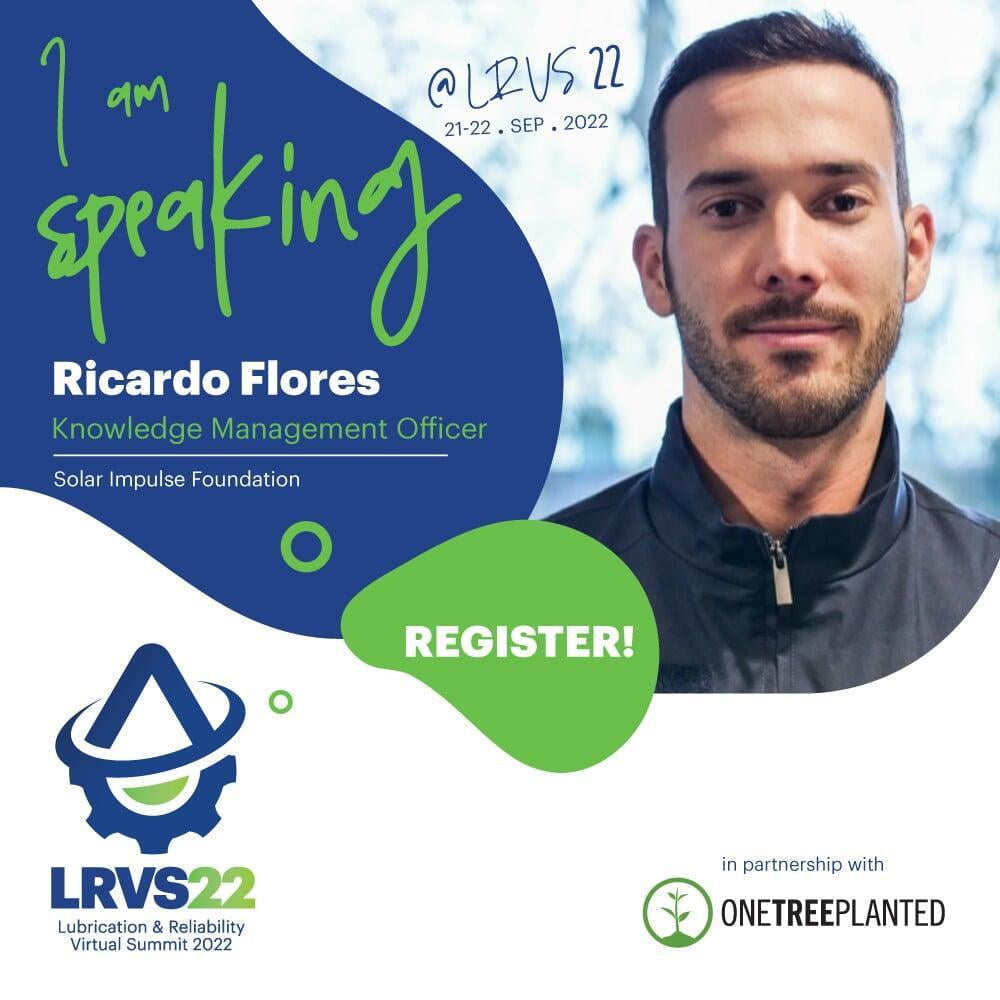

Howard Penrose, Phd
Howard Penrose, Phd
Introduction to Electrical and Current Signature Analysis for Mechanical Systems
Introduction to Electrical and Current Signature Analysis for Mechanical Systems
For his presentation, he will be talking about the origins of electrical and current signature analysis from the beginning. This was to detect electrical and mechanical conditions of motor and generator systems including the gears and bearings in motor operated valves. The purpose was to allow for condition monitoring of equipment in dangerous or unreachable environments such as in nuclear power or deep wells.
In this presentation we will include how ESA is used to detect wear and lubrication issues in generator, gearbox, and main bearings of wind turbines for improved O&M strategies, which will carry over to commercial/industrial applications.
Matthew Moore
Matthew Moore
Advantages of Risk Based Condition Monitoring
Advantages of Risk Based Condition Monitoring
Many condition based maintenance programmes do not deliver their full potential due to a lack of focus regarding the equipment monitored, leading to poor prioritisation of maintenance. A common mistake is being over ambitious when implementing condition monitoring; typically including too many equipment items which may become impractical or have diminishing returns. This presentation demonstrates that adopting a risk-based approach to condition monitoring utilising criticality analysis, not only optimises the equipment selection process but can henceforth be applied dynamically to prioritise maintenance.


Jaime De Luque
Jaime De Luque
6 reasons why our techs don't like to lube and how to approach this issue
6 reasons why our techs don't like to lube and how to approach this issue
Each of these 6 reasons has its origin in inherited paradigms, misconceptions, working conditions, cultural factors and/or simple ignorance. Emulating an RCA exercise, we will identify the causes for the appearance of these ideas and turn them into an opportunity for improvement, to transform the lubrication role into an attractive and motivating one that generates a proper sense of belonging.
The presentation results in a replicable exercise of self-assessment to the role of lubrication in each company and thus obtain an action plan to repower it, generating a positive impact on the reliability of people and assets. The actions are directed towards people, machines and tools, and processes or procedures.
Genevieve Cheung
Have we bred resentment for both men and women in our efforts to increase women in STEM?
In recent years there has been tremendous effort to reduce the gender gap in Science, Technology, Engineering, and Mathematics (STEM) to increase employment opportunities for women to foster economic growth. While significant progress has been made, the pervasive narrative is that women are still significantly underrepresented in STEM jobs.
In this session, we will have a discussion about what the statistics show, how we need to redefine the science and technology of STEM, and our need to break away from radical political doctrines that has been injected into science and education. To address the barriers for women is complex; but we can only start looking at solutions when we create a safe space where both men and women can express their intelligent views without censorship and condemnation.


Blair Fraser
Why Maintenance & Reliability Communications Goes Wrong, and How to Fix it!
In Maintenance and Reliability, communication may be the most important skill set to have, whether talking with production, asking for budget approval, or getting that promotion, yet this skill set is never taught in class or any reliability certification path.
As Maintenance and Reliability leaders, we often need to take complex technical information and make it more understandable for our audience, after all, we are the experts and they likely aren’t. But having so much knowledge on the topics we discuss often makes simplifying the information more difficult, leading to technical jargon and a story that is not re-tellable after the presentation. This is known as the “curse of knowledge”, and there is a way to overcome it and still have a lasting impact.
In this talk, Blair Fraser unpacks why and how most of us get technical communications wrong and curates some of the best frameworks and ideas from some of the greatest speakers and thought leaders on communication.
Paul Daoust
The Accountability Model - A Simple APM Framework
Want accountability for better business results? You must have stark transparency for leaders and practitioners. Join Paul Daoust as he presents a simple, visible and effective framework for managing asset performance. The model encourages asset cost, performance and risk to be considered simultaneously to precipitate more, better decisions on how assets should be proactively managed to preserve and improve value delivery.


Allan Rienstra & Haris Trobradovic
Allan Rienstra & Haris Trobradovic
Ultrasound for Reliability - Rapid Fire Questions
Ultrasound for Reliability - Rapid Fire Questions
We use a fun and fast-paced format to both inform and entertain listeners. Four topics about Reliability with a slant toward lubrication are presented and each speaker (Allan and Haris) take turns commenting on each. When the timer bell rings the other speaker has an opportunity to present their point of view, the final bell rings and we move on to the next topic. Examples of topics are:
- Why too much grease is worse for bearings than not enough.
- Why time-based lubrication is no longer considered better practice.
- How lube replenishment data drives strategic outcomes that reduce grease consumption.
- How lube techs contribute to condition monitoring teams for better collaboration.
Jakub Chlodek
Miscibility of gear oils for wind turbines
Miscibility of gear oils for wind turbines. Lubricants can mix perfectly with each other - however, the additive packages they contain may not work together. The 8 most popular types of oils for wind turbine gearboxes have been investigated. The samples were mixed in the 1/1 ratio, subjected to accelerated simulation in the operating conditions of the gearbox, and then the performance parameters of the individual mixtures were examined. The matrix of compatibility of individual types of oils was created. This is where the first stage of the project has been completed. The results will be discussed.


Don Donofrio
Don Donofrio
Mechanical Infrared Inspections
Mechanical Infrared Inspections
Do you have equipment that heats up or cools down as a part of its failure mechanisms? Inspecting with infrared can easily with no ambiguity, identify a significant number of mechanical problems. This presentation provides an overview of infrared mechanical inspection capability, with particular attention to lubrication issues with critical equipment.
Monitoring Electric Motor Starts
Monitoring Electric Motor Starts
Starting current or in-rush on a motor provides considerable information about the motor, motor power circuit and the mechanical load. With a simple 30 second test and trending and comparison to “like “ motors we can make an accurate and expedient assessment of the unit under test. This presentation will show the capabilities of monitoring motors starting with a presentation of several case studies. If you are not monitoring motor starts you need to view this presentation.
Gakuo Ndonga
Bearings & Lubrication: Understanding The Selection Process
Bearings and lubrication are central in keeping rotating machinery functional. Reliability engineers, machinists, and technicians are challenged in keeping both operating as efficiently as possible, with limited details about their selection. This presentation offers insight into the general bearing and lubrication selection process for machinery, catered to an end-user audience.


Gregory Romer
Gregory Romer
Defining the PF Interval with lubrication related failures
Defining the PF Interval with lubrication related failures
This presentation talks about the PF Interval as it relates to the theory of predicting a failure based on precursors or leading indicators. These indicators provide guidance based on predetermined elemental limits. The predetermination of limits comes by analysing statistical data from previous failures. 4 such failures will be presented.
Andre-Michel Ferrari
Building a P-F Curve using Reliability Engineering Principles
This presentation introduces the basic principles of Reliability Engineering in an operating environment applied to a repairable asset such as a pump, transformer or vehicle as opposed to a non repairable component such as a bearing, gear, or lightbulb. Those principles are then applied to building a PF Curve which will eventually be used to make critical asset management decisions such as replacement, capital cost budgeting or work planning. Because a PF curve combines condition monitoring results and “end-of-life” events, two sets of calculations must be performed. The first calculation establishes the statistical model governing the condition monitoring exercise whilst the second calculation establishes the “end-of-life” model. Another key calculation involves establishing the health index on the vertical axis of the PF curve and its relation to the previous calculations. A brief example involving the construction of a PF curve for Power Transformers will be illustrated by the presenter.

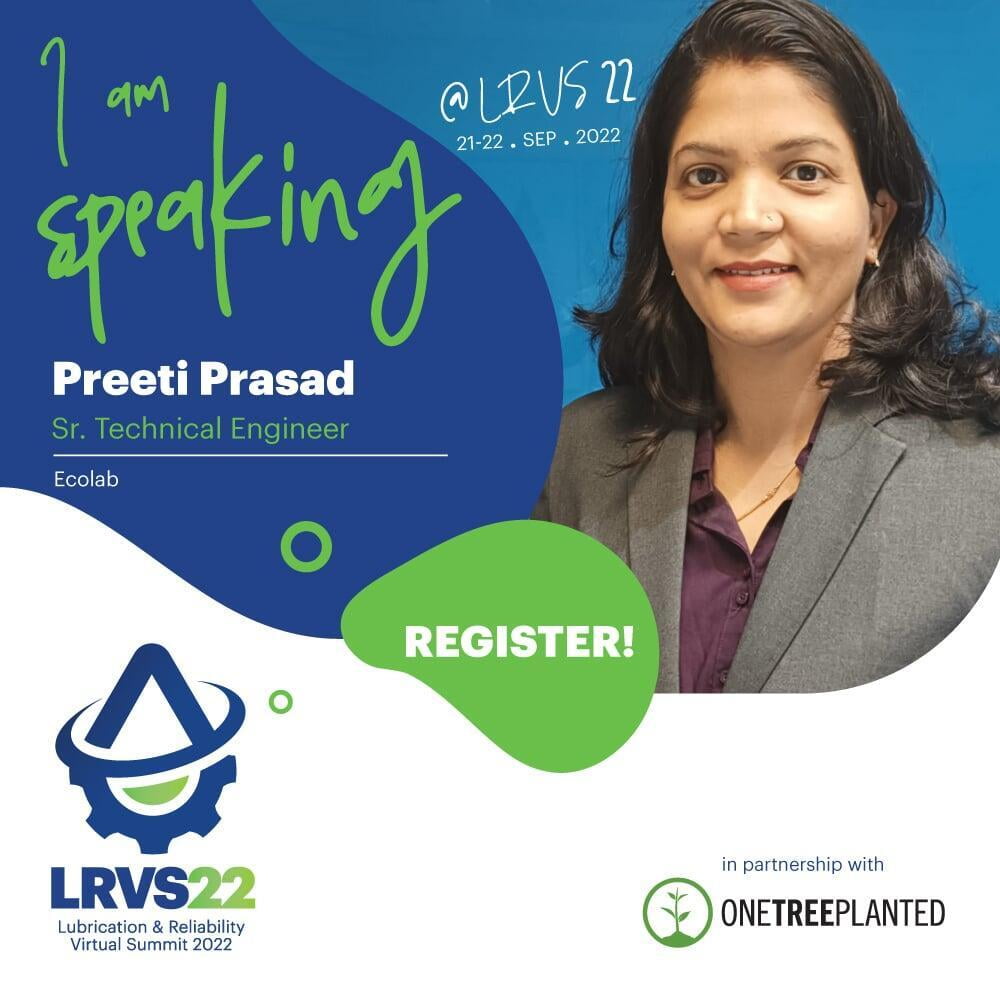
Preeti Prasad
Preeti Prasad
IIoT at Lubrication to Feed- Cooling Tower Reliability
IIoT at Lubrication to Feed- Cooling Tower Reliability
Cooling towers are critical equipment that is exposed to a challenging working environment, surrounded by contaminants like dust-dirt, moisture, heat, chemical, etc. To monitor the cleanliness of lubricating oil, IIoT devices like online particle counter, moisture sensors, etc are equipped likewise for water's quality advance skids measuring pH, conductivity, ORP, etc. are installed to maintain water chemistry within the permissible limits.
Overall cooling tower reliability can be achieved only by addressing issues like corrosion, fouling, microbiological growth, and scaling in both segments. In this paper, I would like to provide insights on the most demanding equipment of any plant " cooling tower" connecting to its lubrication issues and challenges of Feed i.e., Water quality, and helping the industry to meet sustainability goals.
Sean Robins
Simple lubrication and maintenance incentive solutions to make you more valuable to the marketplace.
We are going to be talking about the key points to implement and how tomorrow you can be starting your lubrication journey with passion and drive to make it a standard tool in your box, using simple actions such as taking accountability, keeping a core value, being honest when you don't know and seek further help it's how we all learn we are looking to change the mindset of how people think to situations and set themselves on the right journey to lubrication reliability success.
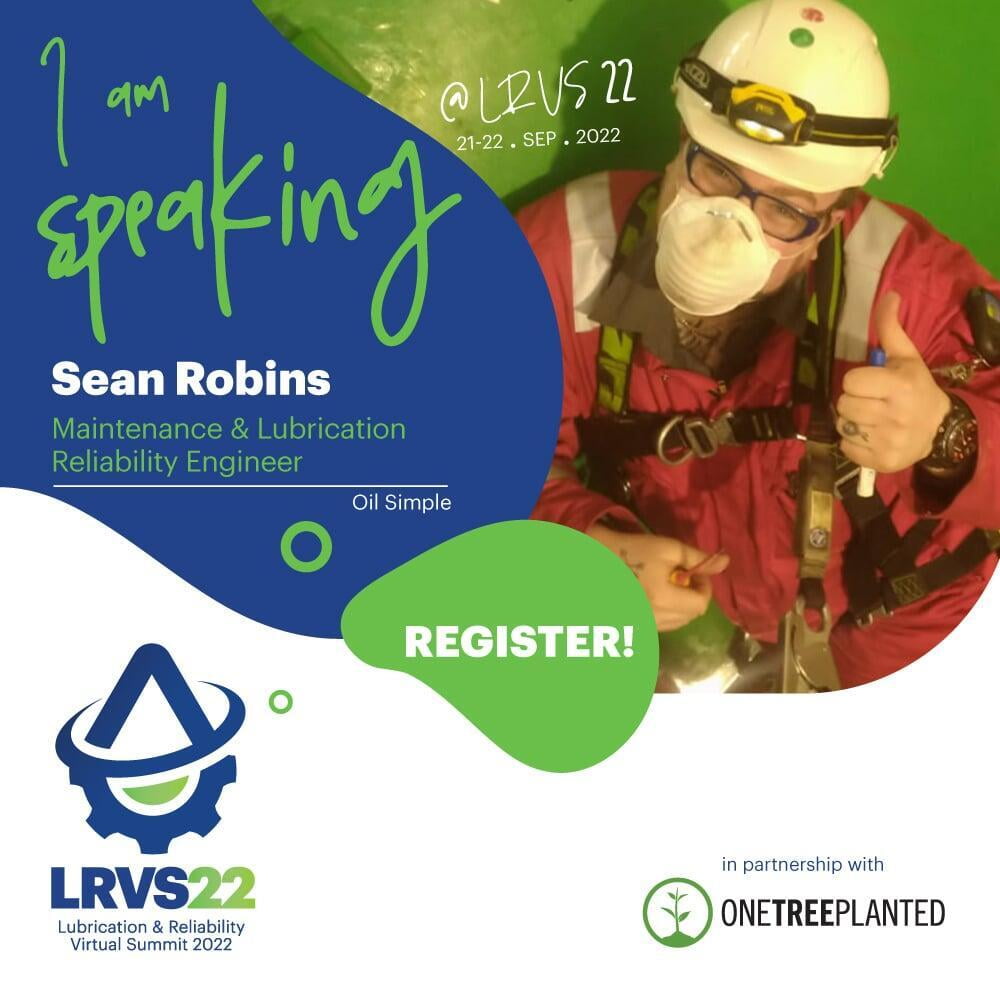
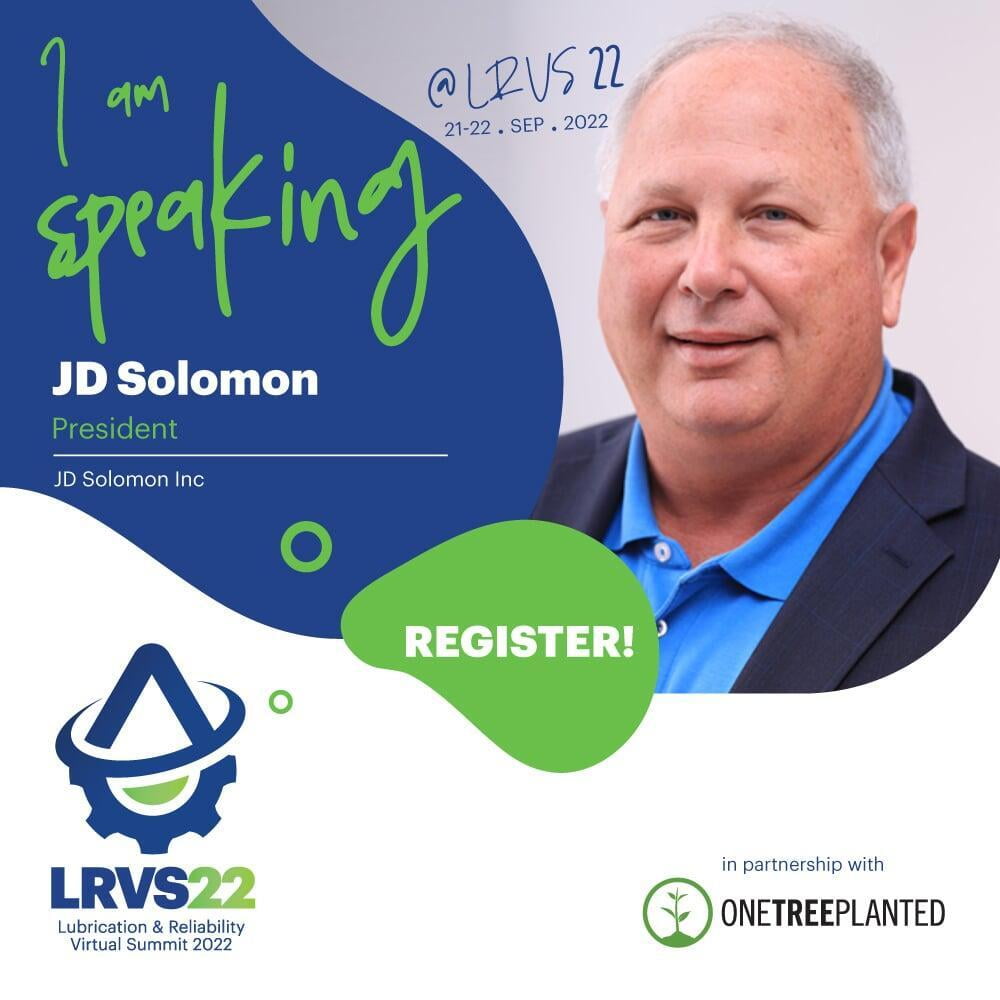
JD Solomon
How to Effectively Communicate Complex Information to Decision Makers
The Communicating with FINESSE fishbone diagram will be used as the outline for this 30-minute session. The seven bones of the fishbone diagram are Frame, illustrate, Noise, Empathy, Structure, Synergy, and Ethics. The session is important because it covers a topic that receives little formal attention in lubrication and reliability training yet is extremely important in yielding performance results. It applies to the full range of conference attendees.
Cliff Williams
Steps to building Reliability - the key lessons
Many organizations understand that they could definitely perform better with Reliability - the challenge is - how? We see so many failed efforts to improve simply because they didn't really know what to do other than 'get better'. There are 6 essential steps that MUST be made on the journey to improve Reliability. There may well be others that you will need to add given your circumstances but if you miss out on any of the 6 , you are not going to get to where you could have. Join us as we explain these steps and provide you with the guidelines to building Reliability.
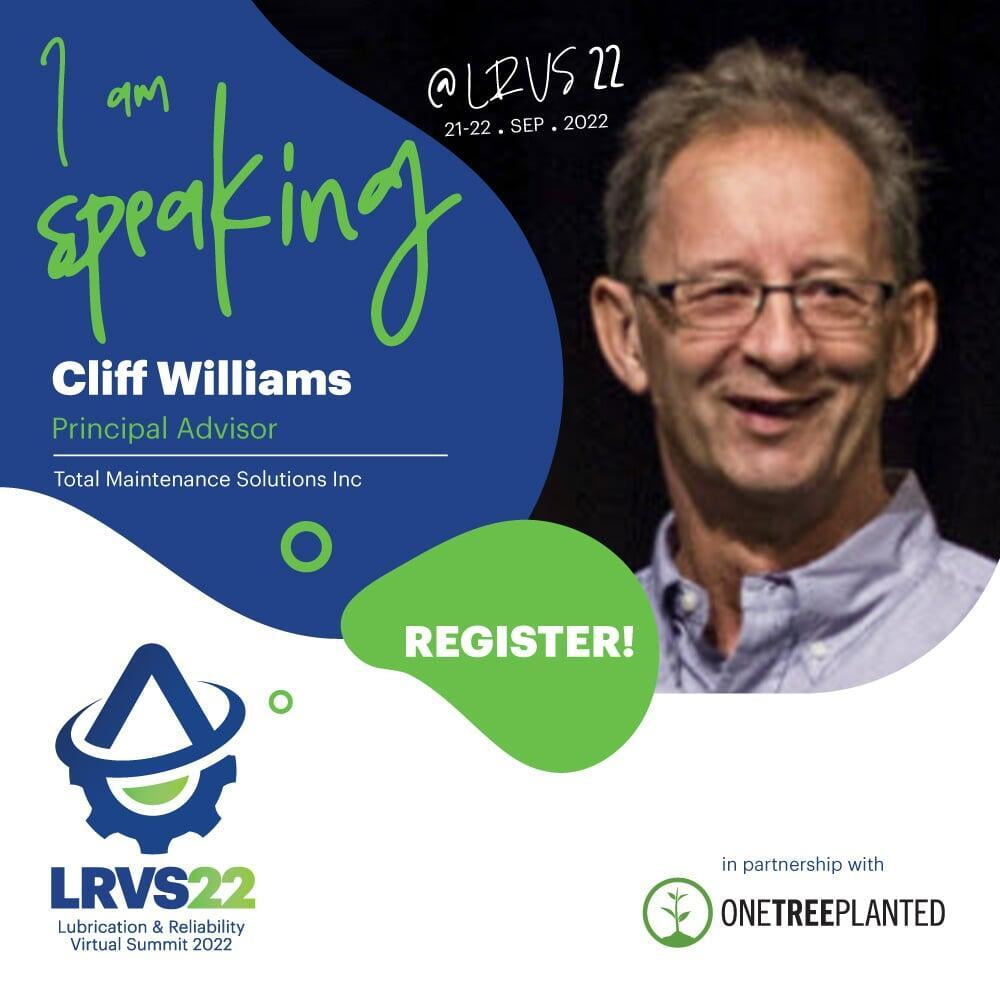

Susan Lubell
Susan Lubell
Building the Business Case for Maintenance and Reliability Improvement
Building the Business Case for Maintenance and Reliability Improvement
With today’s continued emphasis on delivering value from our assets while balancing cost, risk and performance, the need to understand the business contributions from maintenance and reliability activities has never been higher. This session will focus on ‘Building the Business Case for Maintenance and Reliability Improvement’. Topics include:
- Moving from a reactive to proactive maintenance culture – breaking down the silos, introducing PdM methodologies
- Contributions of proposed maintenance improvement activities to meeting organizational goals and objectives
- Quantifying the contributions of maintenance improvement (i.e. increased availability, increased throughput, decreased OPEX per unit of production)
- How to get started on your improvement journey
Lucas Marino
The Criticality of Corrosion Prevention
Corrosion is a leading cause of equipment failures and massive maintenance costs. Understanding the role of corrosion in reliability and the opportunities to address corrosion in design and operation are critical to asset maintainers, operators, and managers. Drop the textbook, focus on the fundamentals, and enjoy a presentation brought to you by two guys who fought corrosion in the maritime industry for several decades, Charlie and Lucas Marino.


Anshuman Agrawal
How does your Lubrication Reliability impact Carbon emission?
The technologies like Lubricant Reconditioning Systems, the machine oil’s life and reliability increase leading to the elimination of oil replacement costs which ultimately leads to a reduction in oil purchase. Reduction in the purchase of new oil means lesser carbon emissions. What people are doing now is taking materials from the earth, making products from them, and giving them back to the environment in the form of waste. The ‘Circular Economy’ tackles global challenges like these while addressing important social needs. Through Oil Reclamation, the oil is rescued from normal degradation; it involves removing the contaminants from the oil and restoring it to good health. This offers many benefits like increased machine reliability, cost savings, saving time on oil change-outs, decreased oil disposal costs, and reduced environmental impacts.
Noah Bethel
Noah Bethel
How to use Reliability to Offset Supply Chain
How to use Reliability to Offset Supply Chain
Reliability is the application of knowledge and technology to identify correctible conditions that would otherwise lead to failure, thus extending the life of a company’s assets. Having a machine reliability program can make the difference in preventing a shutdown to key systems during periods of supply chain shortages. Too often, companies will operate under a reactive or run-to-failure mindset, especially when equipment is cheaper to replace than repair, or cannot be repaired. Though this is a legitimate strategy for some types of assets, it is considerably less so for high-cost assets that are complicated to repair. That is why when supply chain issues surface, it becomes even more disruptive since there is no longer a means of replacing key equipment in the short term.
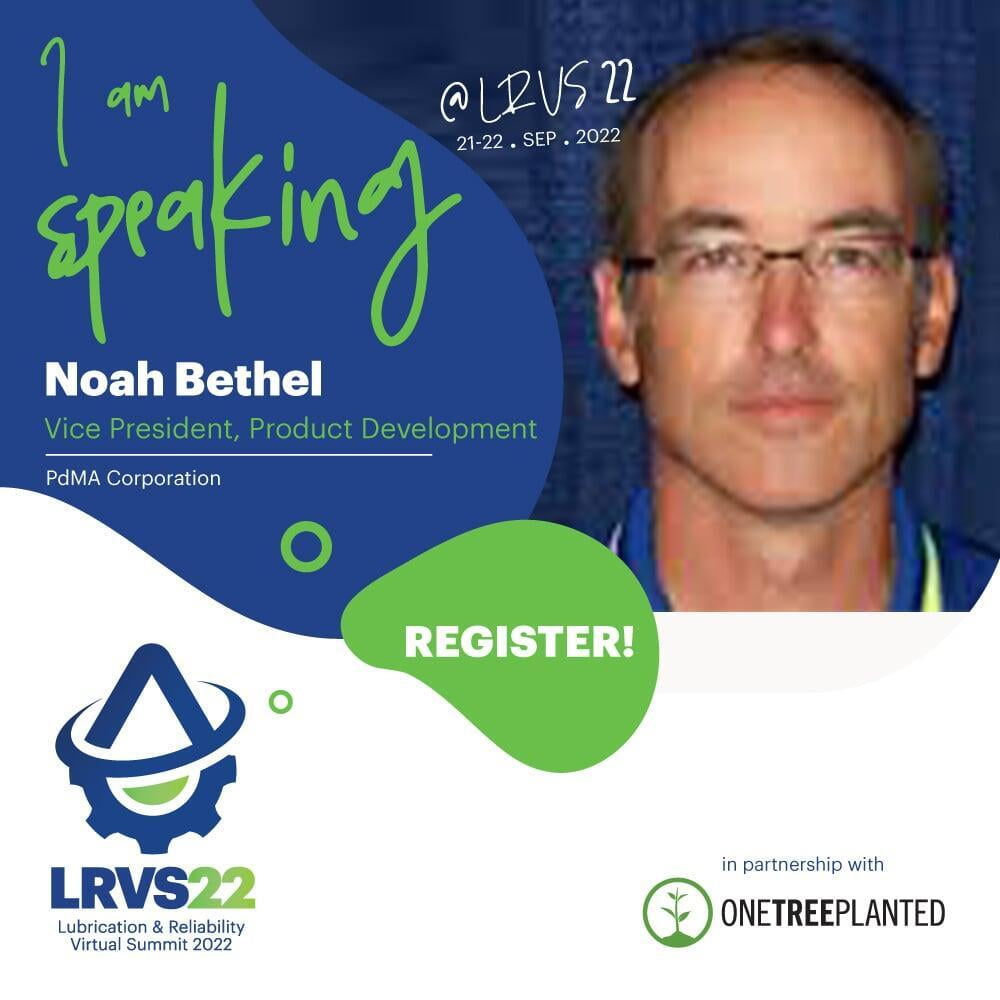

Reynir Hilmisson
Reynir Hilmisson
Advances in Lubrication Sensor Technology
Advances in Lubrication Sensor Technology
Reynir will be taking us through a complete walk through of the latest advancements in oil sensor technology and target applications. This presentation is aimed at helping the audience to understand more about sensor technology and how it has advanced over the years to where it is currently. It will also focus on the applications of these sensors for particular applications and how they should be used.
Greg Livingstone & Sanya Mathura
Greg Livingstone & Sanya Mathura
Preventing Turbomachinery Cholesterol: A Story of Varnish
Preventing Turbomachinery Cholesterol: A Story of Varnish
Varnish is the cholesterol of industrial machines. It has created a pandemic throughout the industry for the last couple of decades. Nowhere has there been more pain however than in turbomachinery. The two decades have seen a significant evolution in how turbomachinery lubricants are monitored, maintained, and formulated. There is so much new information in this space that Sanya and Greg are co-authoring a book on varnish. Please join us for this presentation to get an early peek at this groundbreaking publication, which shall be published by 2023.


Erik Mosselaar
Erik Mosselaar
Condition monitoring: driving progress toward sustainability goals
Condition monitoring: driving progress toward sustainability goals
For his presentation, he will be talking about
*The impact of sustainability and net-zero goals on manufacturers
*How organizations can close the gap
*7 ways manufacturers can impact sustainability goals
*How cost savings can help offset sustainability investments
*Mitigating the impact: online monitoring and automated analysis
*Sustainability and net-zero goals
Adrian Messer
Reliability for Hiring: The Answers Are In Plain Sight
It’s 2022, and along with everything else that’s going on in our world, you’re struggling to find the right maintenance & reliability talent. Don’t give up. The talent is there, it has just migrated elsewhere, and you have to know how to find it. By understanding the current state of the workforce and both trends in labor and trends in worker mentality and attitudes, it is possible to develop a strategy to find high quality and high value maintenance & reliability talent. Many times, it starts with analyzing and understanding the current culture within your own organization and striving to create a culture of reliability. This presentation will discuss both the current state of the workforce, and provide some direction on considerations for identifying, qualifying, and developing a more reliability focused workforce.


Justin Hatfield
Justin Hatfield
Spare Electric Motors - Can you count on them?
Spare Electric Motors - Can you count on them?
This presentation will help you answer key questions on your spare electric motors, such as:
-Should you have spares?
-Do you have too many? Too Few?
-Do you know where your spares are?
-Do you know the condition your spares are in, right now?
-Are you confident in installing one of your spares, tonight?
Dr Lijesh Koottaparambil
Grease Condition Monitoring Sensors
Recent research shows that monitoring the entropy generation based on the laws of thermodynamics offers a remarkably reliable and efficient approach for monitoring grease degradation. My presentation will focus on explaining the procedure for determining grease degradation using an entropy generation approach and detailing the procedure for measuring their real-time values using a grease condition monitoring unit (GCMU). Further, I will demonstrate the application of a new portable contact angle instrument that provides practitioners with a reliable means for rapid testing of grease and making a decision on the grease condition in a plant environment.

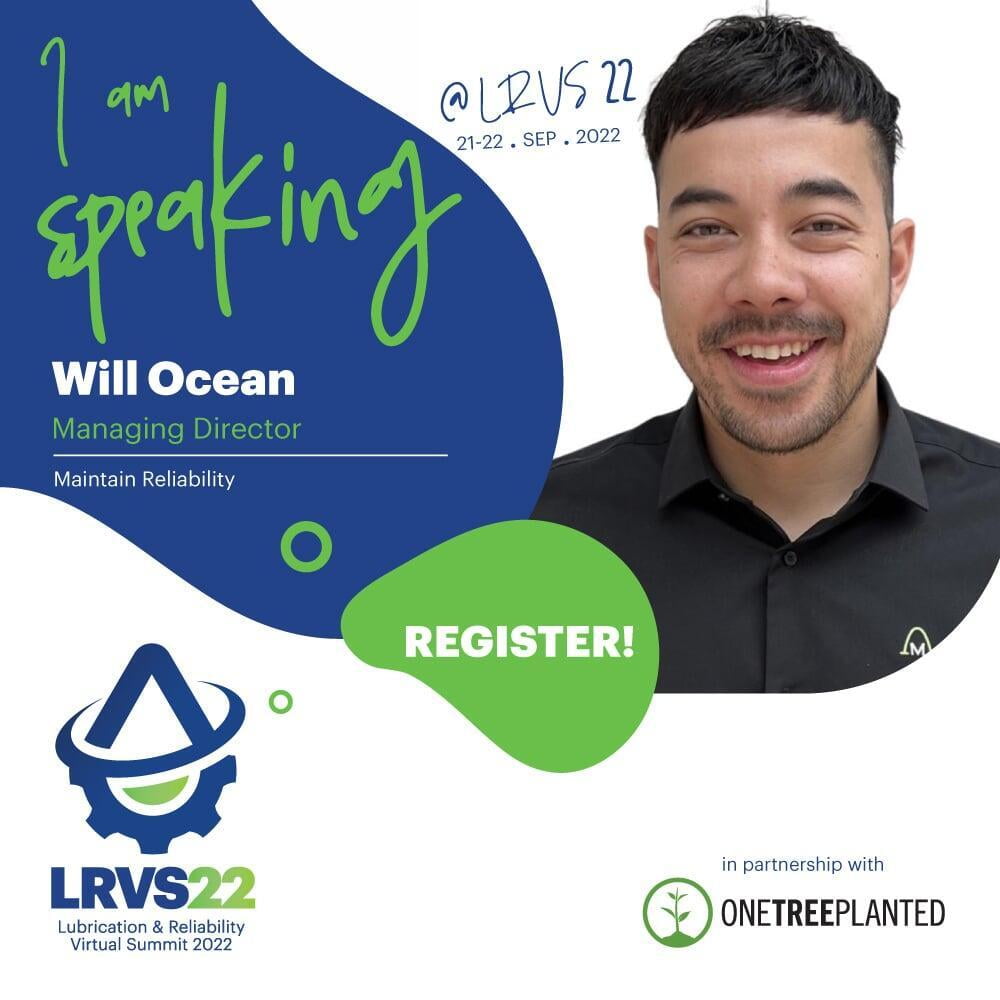
Will Ocean
Will Ocean
Lubrication Factor using Vibration Analysis
Lubrication Factor using Vibration Analysis
We have used Vibration Analysis for a long time and we have now created a specific reading that identifies poor lubrication at higher frequencies. Vibration Analysis is evolving so we can measure higher frequencies ranges that allows us to improve reliability by increasing the life of the assets we monitor. This presentation will focus on how the lubrication factor is used in vibration analysis.
Wojciech Majka
Industrial lubrication outsourcing using the ICML 55.1 standard
Authors will present how to use ICML 55.1 standard as support and guideline while implementing master-class lubrication program that is tailored to provide highest equipment reliability in function of cost and also – how to introduce and effectively run it in the plant. Concept of lubrication management role in Industry 4.0 concept will be presented.


Jonathan David
Gaining the Edge In Business with Lubrication Excellence & Predictive Analytics
In today's industry Reliability is becoming the competitive edge businesses can utilize to standout in the marketplace. The agelong practice of lubrication excellence coupled with advancements in predictive analytics is proving to be an important component in our reliability toolkit.
In this presentation I will be sharing principles, practices and case studies of how we can create competitive advantage for our organizations using lubrication excellence and advancement in predictive analytics. Expect to find a balance of business school insights and plant experiences I have gathered over the last 17 years.
AW Schultz
AW Schultz
Adaptive Maintenance Planning
Adaptive Maintenance Planning
For his presentation, he will be talking about Adaptive Maintenance Planning as the creation and maintenance of an evolving plan from start to finish based on goals, values, risks, constraints, stakeholder feedback, and the results of reviews. Planning is done at multiple levels (strategic, release, iteration, daily).


Ben Hartman
Ben Hartman
Revitalizing in-service lubricants: Comparing laboratory studies to real world application
Revitalizing in-service lubricants: Comparing laboratory studies to real world application
Quite often at our lab we replenish anti-oxidants and increase solubility of in service industrial lubricants. One of the tests which are frequently performed is also a test for compatibility of blending two different lubricants. This leads us to the question, “Does success in the lab equal success in the field – how often and for how long?” We will discuss the importance of simulation testing and whether success in the laboratory translates to real success in the field in this presentation.
Elona Rista
TOPP Test - Key Findings from Benchmarking Turbine Oils via Accelerated Aging Tests


Angel Torres
Angel Torres
7 Steps to Predictive Maintenance
7 Steps to Predictive Maintenance
Today’s plants tend to consist of a wide assortment of assets patched together like a colorful quilt. The machinery and equipment can range from highly advanced robotics to outdated legacy solutions, stretched past their normal life expectancy. Plant engineers must make these disparate assets integrate and perform as one, which can be a challenge, especially when lean budgets, escalating market demands and conflicting strategies add to the complexity. Forward-thinking plant engineers, though, can step up to the challenge, elevating processes beyond simple reactive mode. It begins with a new mindset – and modern technology.
Tomas Klima
Turbine engineer dilemma: to clean a disastrously polluted turbine oil system or build a new one?
Procedure of restoration of cleanliness of extreme contaminated oil systems operating the non-flammable ester-based fluids by using hydrodynamic cleaning and turbulent flushing technology. Case study on 1000MWe NPP steam turbine. This session will focus on:
- How to remove ageing products and deposit formation and accompanying corrosion from lube oil system operated on ester-based fluids.
- High velocity oil flush for high machine availability
Experience facts and case studies will be discussed.


Douglas Purnell, Jr.
Know thy Enemy: Varnish
Sun Tzu in the Art of War famously said, “Know thy enemy”. If varnish is the enemy, the better we understand it, the higher chances of winning the battle against lube oil deposits. We know that varnish consists of oil degradation products, but what is the chemistry of varnish? Understanding varnish chemistry enables us to make better formulations and gives insights on how to best manage in-service lubricants. In this presentation, I will present data from deposit characterization studies from controlled accelerated aging experiments. Data interpretation will be done on multiple different formulations stressed at two different temperatures to give much great insight as to what varnish is. Ultimately, this data provides guidance on varnish avoidance strategies.
Maxwell Holloway
Incorporating your data into a Learning Management System
Lancer Analytic is a service subscription designed to incorporate your data into a Learning Management System. Your data is transformed into content designed to provide training. All the work that has been done is transformed into training classes per topic or content depth. Data from various sources is utilized so any changes are captured and turned into learning lessons. This presentation introduces you to the process and scope at which Lancer Analytic works and the benefits it produces.


Mark Barnes
Mark Barnes
The Impact of Water on Pump Reliability
The Impact of Water on Pump Reliability
In industries that rely on process pumps, water in the form of free water, steam and airborne humidity is a pervasive contaminant. Water not only leads to rust and corrosion but can lead to a reduction in oil film strength resulting in overall poor lubrication conditions, that can reduce bearings life expectancy by as much as 50%. In this session, we will look at how water can impact pump bearing life, as well as discuss simple strategies to control and monitor water in ANSI and API pumps.
Mika Perttula
How lubricants CO2 footprint analysis contributes to organization’s Net Zero targets?
Organizations globally are targeting Net Zero in their operations over the coming years. While global warming is heading +1,5Cº level, companies are sourcing new ways to reduce their carbon footprint. What is the role of lubricants in the big picture? Should industrial companies calculate lubricants CO2 emissions in their balance sheets or is it just a consumable that is visible in oil companies CO2 balances only? Challenges and benefits of CO2 analysis & simulation to organizations and how all this can be automated? Session addresses these questions along with real-life examples.
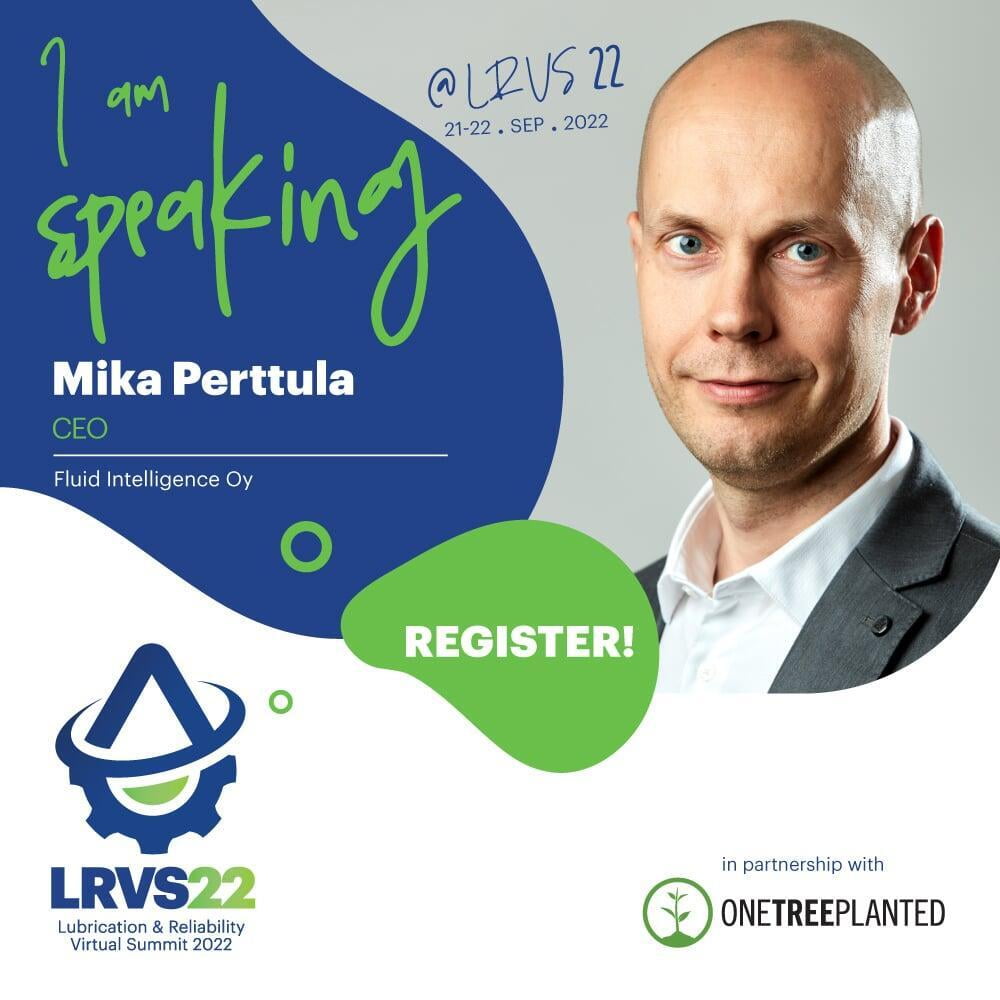
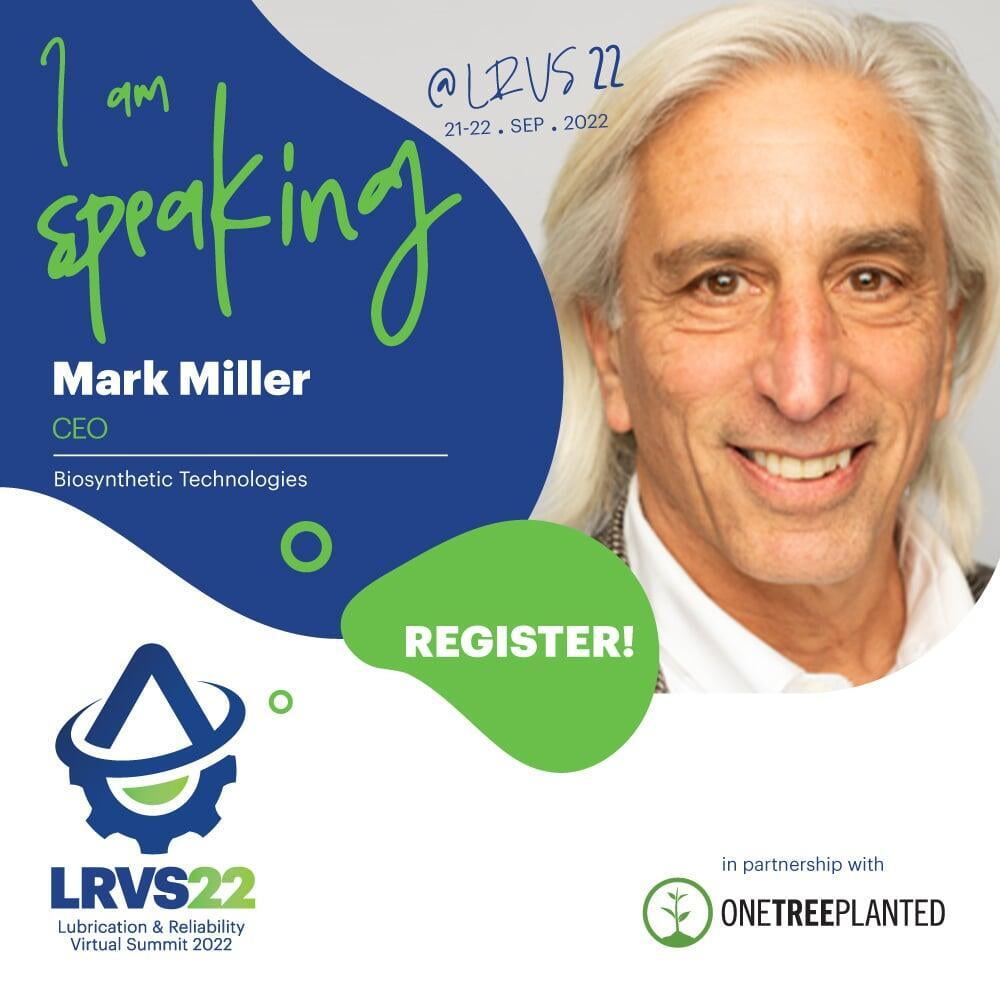
Mark Miller
A Comprehensive Evaluation of Sustainable Raw Materials in Lubricant Production
In an effort to improve environmental performance, industry must choose lubricants that can offer optimum long-term performance and environmental safety. This paper/presentation focuses on the innovations, features, benefits, strengths and limitations of the different types of EALs. It explores classification of base fluids and additives as well as the requirements of finished lubricants. It compares the performance of conventional petroleum products and bio-lubricants. The different definitions of environmental acceptability and why that is important will be explored. The regulatory driving forces will be identified as well as the requirements for each. The considerations for choosing the type of EAL that is most applicable to specific applications will be studied.
Rafe Britton
Why do All Our Presentations Suck? - Strategies for Increasing Engagement with Lubrication Topics
LRVS is a process of self-selection - it's likely that every attendee already understands the importance of lubrication and is going to remain engaged. But how do we expand our reach? How do we command the attention of people that have only a passing interest in the topic? And how do we quantify the attention of the audience?
In this short presentation, we'll look at strategies for increasing engagement during webinars & training presentations and discuss how the pandemic changed everyone's expectations for informative content.


Anjelica Williams
Anjelica Williams
The Importance of Marketing, Networking, and Mentorship in the Reliability Industry
The Importance of Marketing, Networking, and Mentorship in the Reliability Industry
It is needless to say that there can be a few learning curves along the way when integrating into the Reliability and Maintenance industry. Anjelica will be discussing the challenges and pitfalls of being a newcomer to the Reliability and Maintenance community. In doing so, she would like to emphasize the importance of a 'beginner's mindset' in relation to mentorship and learning. She aims to highlight the significance of an effective marketing strategy, the essential role of networking and the lessons learned through engagement with the community
Manas Ranjan Pattnayak
Air lubrication for the environment and sustainable development of industrialized humankind: present and future prospects
Significant improvements in tribological and dynamic performances are seen by incorporating state-of-the-art surface texture technology in aerodynamic bearings. Our team is also exploring the rotor dynamic response of accelerating/retarding rotors supported on self-acting air bearings to propose suitable acceleration/retardation schedules to keep the whirling amplitude and frequency as minimum as possible during the acceleration/retardation phase of the rotor.
The present talk will cover the fundamentals of air lubrication theory, the past and ongoing research in this exciting field across the globe, and the future of air lubrication in modern machinery for sustainable development.


Jake Mazulewicz Phd
Jake Mazulewicz Phd
Seven Practical Steps to Build a Culture of Human Reliability
Seven Practical Steps to Build a Culture of Human Reliability
Errors and surprises in high-hazard industries can end lives, ruin careers, and capsize company reputations overnight. In this presentation, you'll learn the fundamentals of seven key strategies successfully used by: pilots, nurses, firefighters, paramedics, electric utility lineworkers, military paratroopers, and other high-reliability teams across the globe. You’ll walk away with practical techniques to apply immediately, plus eye-opening insights to help you improve safety and human reliability in your workplace for years to come.
Michael D. Holloway
Advanced Employee Training - Applying Advanced Techniques For Competency Development
This session explores the development of new training processes with direct implications for improved cognitive performance to achieve maximum application and retention from their instruction and development.

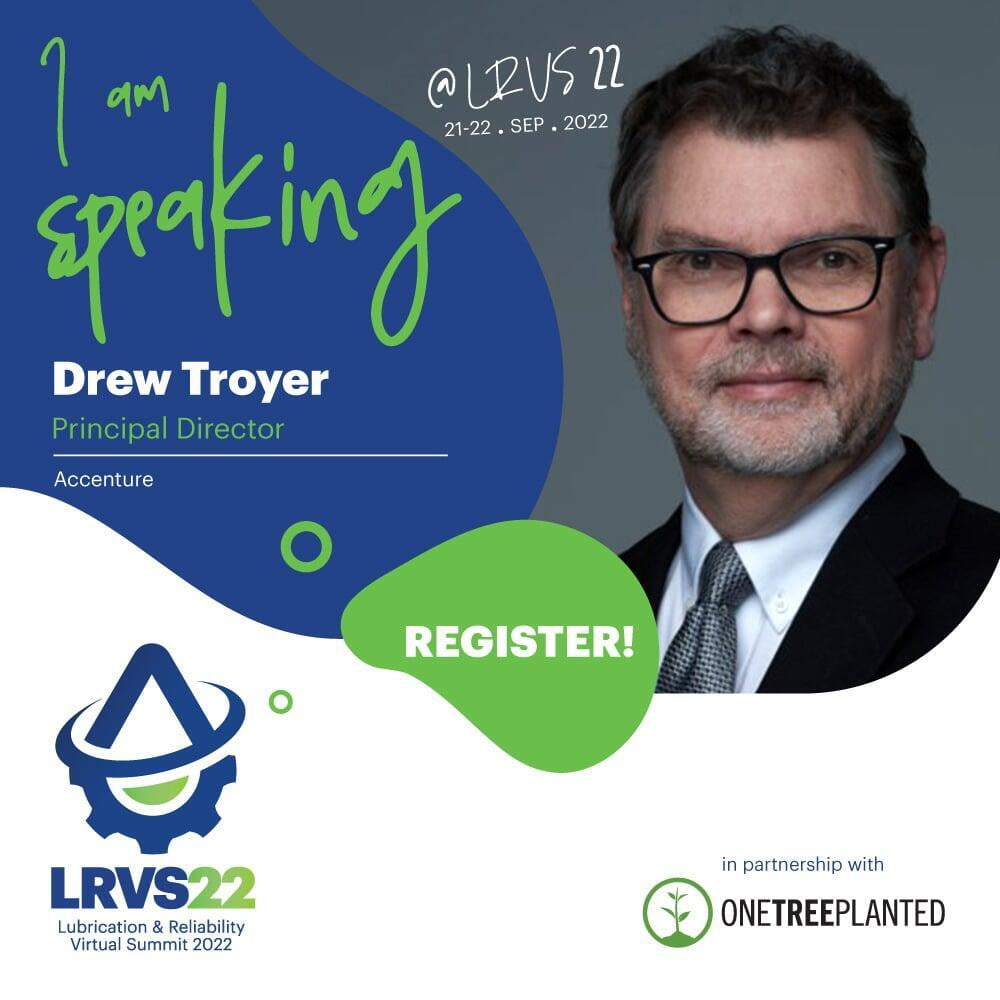
Drew Troyer
Upgrading Your EAM/ERP System? Employ a Business Process-Centered Configuration Approach – Not Just a “Lift and Shift
In this presentation, we’ll address the following important topics:
- Compare the performance of leading and lagging asset managers in Dollars & $ense.
- Summarize key characteristics of leading asset managers.
- Summarize common examples of equipment-, production, and market/marketing-induced losses to Overall Equipment Effectiveness (OEE).
- Discuss the risks of a purely IT/Finance-driven ERP/EAM configuration that fails to reflect the informational requirement of Operations, Maintenance, Supply Chain, and other functional groups in the organization.
- Address how you can employ OEE-driven analysis to optimize and, where required, reengineer, cross-functional business processes to recover losses.
- Reconfigure the ERP/EAM to support effective business decisions that improve your triple-bottom-line performance – profit, people, and planet.
Juan Villarreal
Case Study: Mitigating Varnish to Extend Rotating Machinery Life Cycle
Varnish build up is a common problem in rotating machinery. This growing film catches other fine particulates on the sticky surface forming an abrasive, destructive surface. This case study reviews how addressing lube oil varnish in our operation extended compressor component life. Removing varnish had measurable impacts on machine efficiency due to reduced friction and wear between bearing surfaces. The value of this can be expressed by financially and environmentally, as it lowers our carbon footprint.

